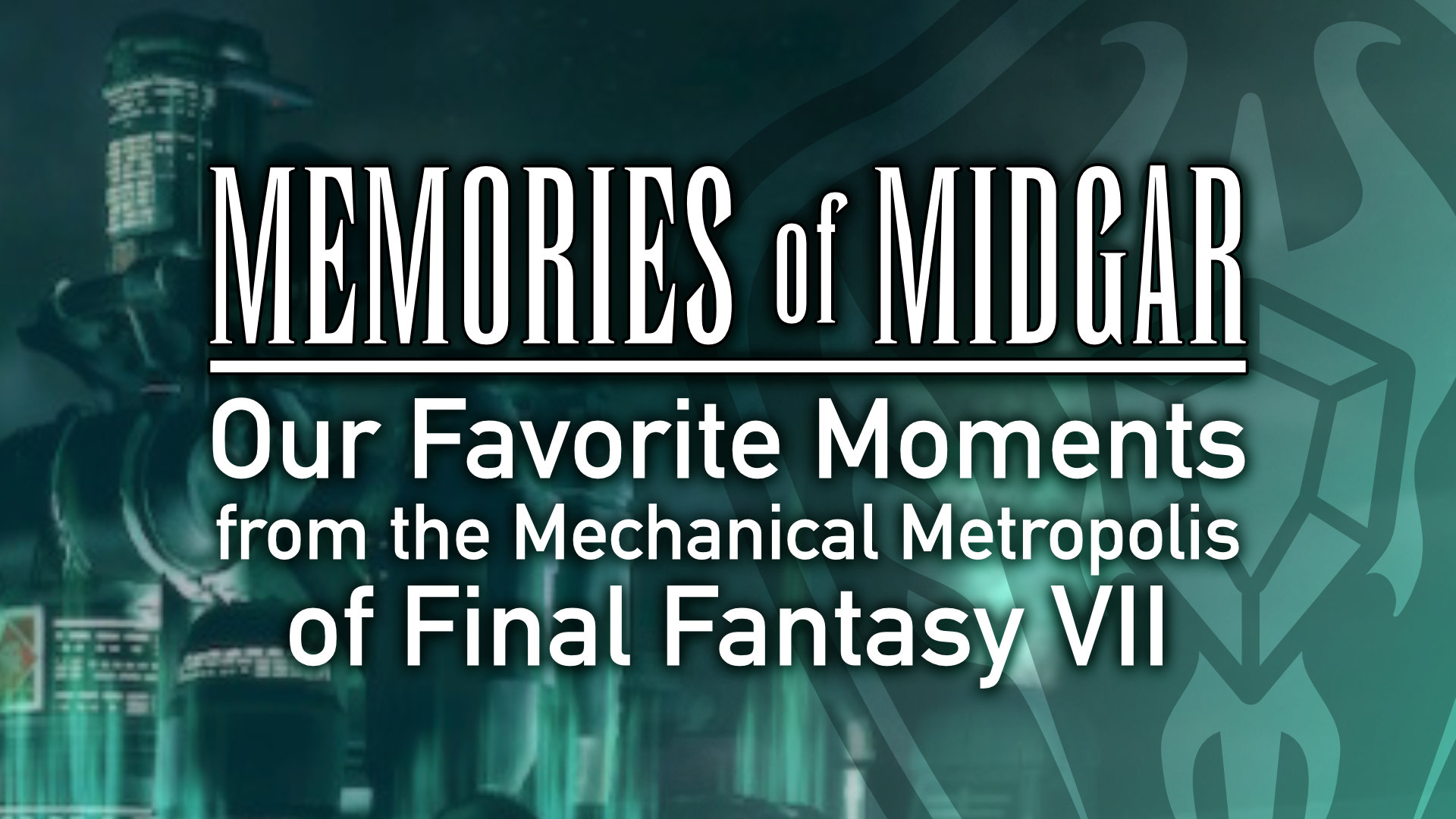Final Fantasy VII is one of the most important JRPGs of all time. Regardless of how we feel about it over 20 years later, it broke new ground and brought untold numbers of people to the genre. Final Fantasy VII was so appealing in large part because of the captivating opening hours in Midgar.
With the impending release of Final Fantasy VII Remake, which will cover the Midgar section of the original game, we thought it was time to take a look back at some of our favorite moments from said mechanical wasteland.
What are some of your favorite moments from the opening hours of Final Fantasy VII? Let us know on Twitter, Facebook, Instagram, and Discord.
Intro by Zach Wilkerson
These Trains Ain’t Goin’ Nowhere
by Alana Hagues
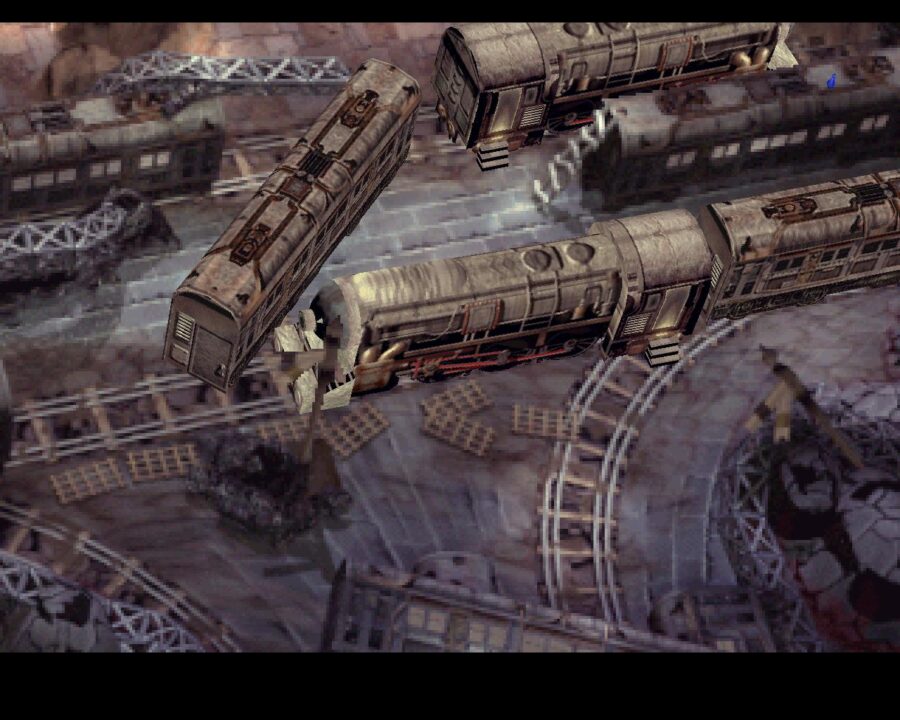
This might sound unusual, but the Train Graveyard has always been one of the most memorable locations in Midgar for me. Its significance to the plot is minimal; in fact, I imagine most people remember the area as that frustrating-to-navigate section just after being dropped from Don Corneo’s mansion, but I’ll never forget coming here for the first time. Emerging from the sewers, I felt a chill up the back of my neck as “Anxious Heart” started playing, almost echoing around the area. Unsettled, I started inspecting the intricate pre-rendered background full of battered train carts and rusted train tracks. Even the confusing structure and ease of getting lost made me cautious. I was attacked by Ghosts, disgusting horned creatures, and the Eligors that roamed the area. And most of all, it was lifeless, left to rot underneath the pizza, if you will. It really shook me.
The Train Graveyard became emblematic of Shinra and Midgar for me. Barret had already said it better than anyone else earlier: “It’s cuz of that &^#$# ‘pizza’ that people underneath are sufferin’!” But here was a visual representation of the disregard Shinra had for the people who lived in the slums. It also hints at the twisted nature of what the Electric Power Company has been doing, like the disgusting monsters. Things only get worse from there onwards, but the Train Graveyard prepared me for what was to come (eyes as nipples notwithstanding). I adore just how unsettling FFVII can get as a game, and it’s this place that made me first realise it, before even the Shinra Headquarters. It’s scarred into my memory just how lost and uncertain I felt coming here as a kid, and now as a result, whenever I replay FFVII, I tread cautiously through this pile of rust.
A Light in the Dark
by Audra Bowling
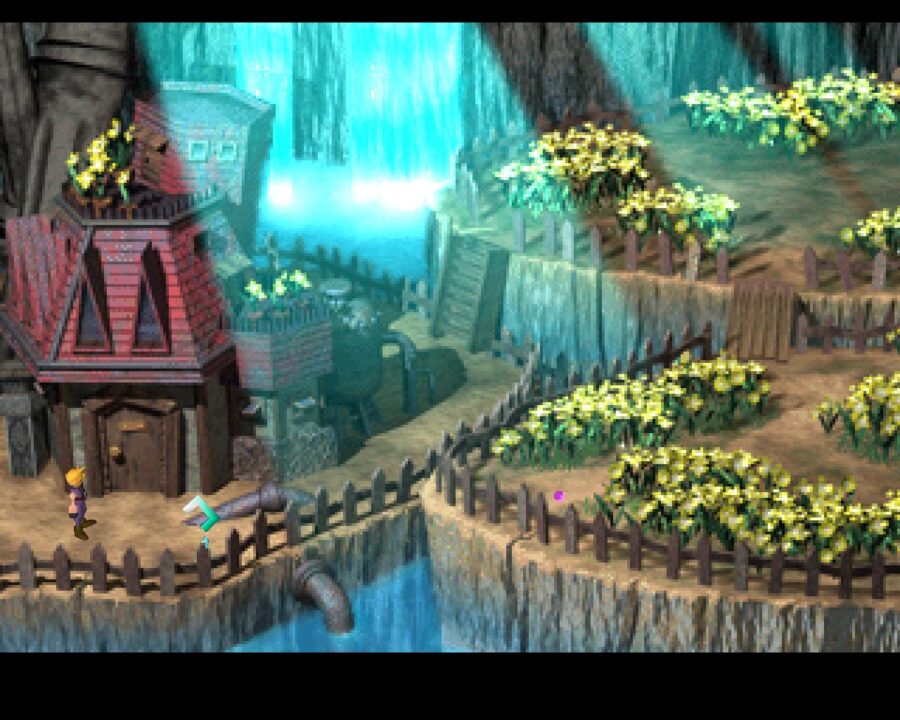
Final Fantasy VII will always have a special place in my heart since it was my first true RPG experience. I was in middle school and had just gotten a PlayStation. I remember my uncle, a non-gamer, gifting me a copy of the game because he “thought it was more than just mindless violence.” I was intrigued by FFVII‘s description, and so it was the first game I ever played on my shiny new console. I was immediately drawn into FFVII‘s world from the opening scene. I found Midgar to be an incredibly fascinating place, full of characters going about their lives despite the corruption of the company they were forced to live under. Midgar’s streets were depicted as dirty and grimy in FFVII, but I genuinely remember seeing the warmth of the townspeople and how real Jessie and the rest of AVALANCHE seemed in their resistance; how innocent Marlene was; how indifferent but ultimately human Cloud was beneath the surface. I loved the little spots of hopefulness that were shown to be growing amidst the slums in the bright imagery of the flowers juxtaposed at Midgar’s ruined church and around Elmyra and Aerith’s home. It was those images of hope in FFVII‘s opening segments, of even a small light still glimmering in the deepest and darkest of places, that really stuck with me. I think the whole of Midgar cemented FFVII‘s emotional message really well with its fantastic settings, world building, and the believable comings and goings of its residents. Even now, I haven’t forgotten that sense of wonder whenever I fondly look back on my time playing the original FFVII.
Demo Hype
by Ken Chu
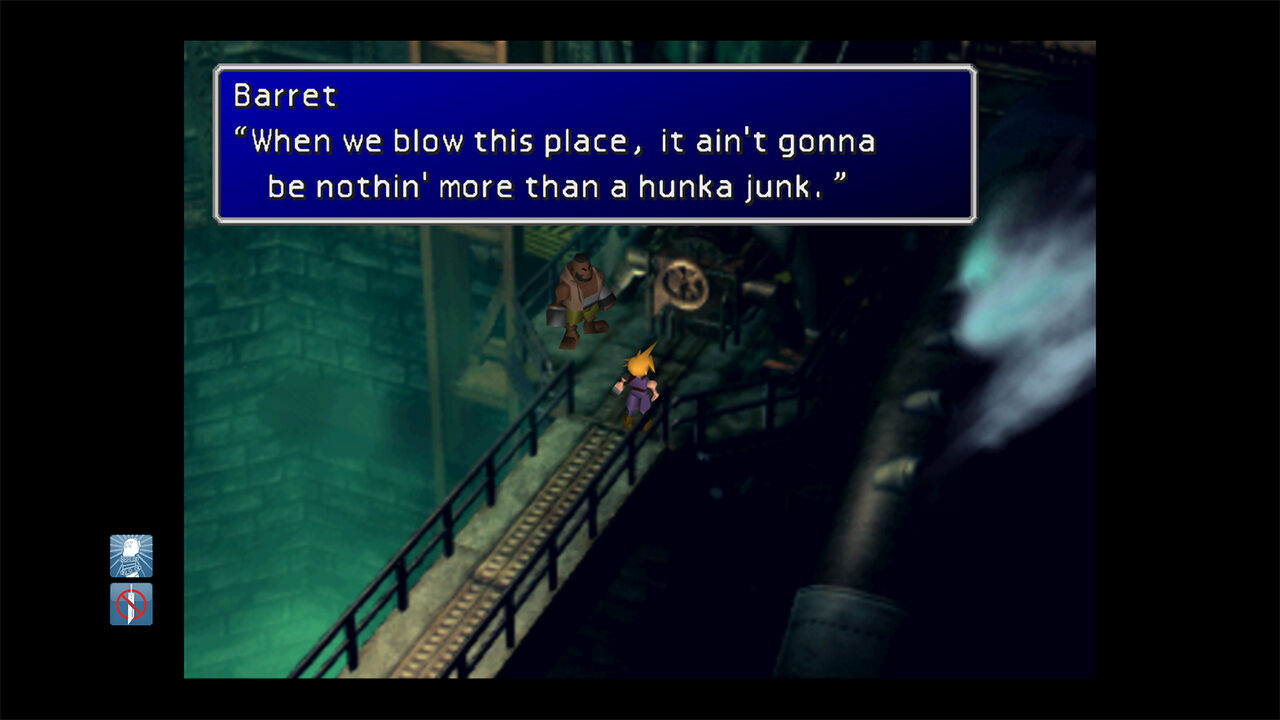
Those of you who weren’t gaming back then might not know this, but the original version of Final Fantasy VII built up a lot of hype by releasing a demo of the exact same mission we got in the demo for the Remake. There were no downloadable demos back then, though, since the first PlayStation couldn’t even go online. To play that demo, you had to buy a fighting game from Square called Tobal No. 1, and my brother bought it so we could play it.
Back then, narration in gaming wasn’t anywhere near what it is now, and what that original FFVII demo offered had me as hyped up for the original release as I am now for the remake. The sense of urgency the game delivered as you completed your raid on that Mako reactor was truly unprecedented in an RPG at the time, and the graphics and music were among the best I had ever seen in that genre at that point. The gameplay wasn’t groundbreaking for a turn-based RPG, but it was really smooth and well executed.
Initially, the full release didn’t meet the hype that the demo built up for me. The biggest issue I had with it was that the narration really tailed off in the second half of the game. But over time, the game did grow on me to the point where it still ended up being my favorite Final Fantasy.
Let’s Blow This… Pizza Stand
by Stephanie Sybydlo
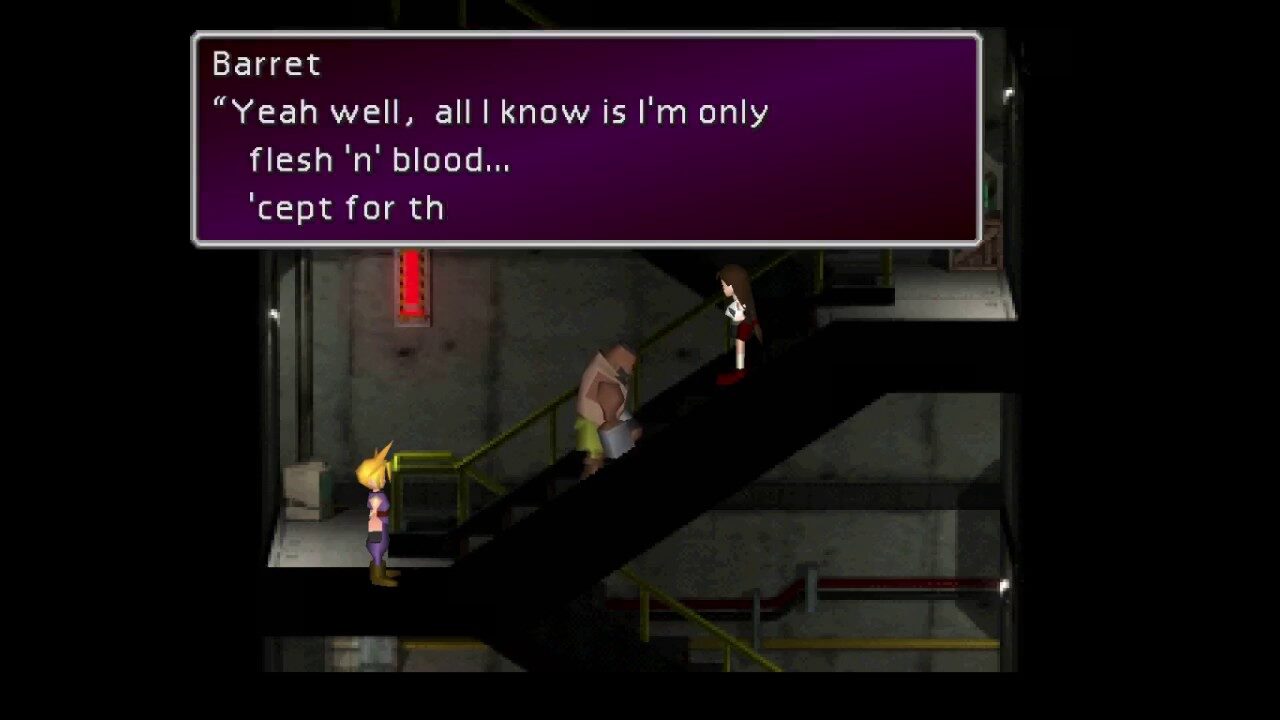
It’s hard to choose which Midgar moment is my favourite because Final Fantasy VII makes an incredible first impression. Somehow, Square miraculously made a lengthy RPG prologue into something that was totally fun to play through time and time again.
But I want to talk about the final stretch, because it goes out with a bang metaphorically bigger than what we started with. Our heroes are at their lowest low: AVALANCHE have lost their comrades Biggs, Wedge, and Jessie, watched helplessly as Aerith gets kidnapped by Shinra, and even lost their home and headquarters within the Sector 7 slum. We’ve been set up, beaten down, and have nowhere to go.
Now the next part gets a little crazy, but let’s roll with it.
So then we — this time literally and metaphorically — climb out of the wreckage by finding a path of debris that leads from the slums to the very front entrance of Shinra’s HQ! (Lucky!) And with no fewer than 70 floors to work through, we lead the crew and…
[A] Blast through the front entrance, gun-arms blazing, swords bustin’, and fists fistin’!
[B] Take the stairs!
— We take the stairs, of course! And spend the next five minutes of our lives making circles around staircases, engaging in amusing banter with Tifa and Barret along the way mostly about how many stairs there are. Then, when you arrive on the 59th floor without too much trouble (mostly thanks to dubious security), you now require Key Cards for each new floor. It’s a unique spin on your typical “RPG dungeon” where we solve a series of strange objectives in a contemporary building. Tasks such as: assembling a model, amusing disgruntled employees, spying on Shinra from a toilet stall, discovering an alien torso, and stopping a mad scientist from siccing a talking lion-wolf (Red XIII) on our dear friend Aerith with the intent for them to reproduce. Yeah, I don’t get that part either. AND then we get caught, spring out of jail, find Shinra Sr. dead, watch Shinra Jr. immediately come to inherit his dad’s evil empire, and finally make our getaway in the best way possible: by stealing a car and driving far, far away.
…So yeah, a lot happens! Final Fantasy VII manages to effectively explain its world and raise the stakes of its story simply through one giant location, and there’s never a dull moment…not even climbing up six flights of stairs. As our heroes successfully make it to the end of the road (literally), the only route left is to finally venture out into the world. Similarly, our band of heroes now shifted their sight from stopping Shinra to saving the entire world from something bigger.
Cinematic Overload
by Nicholas Whaley
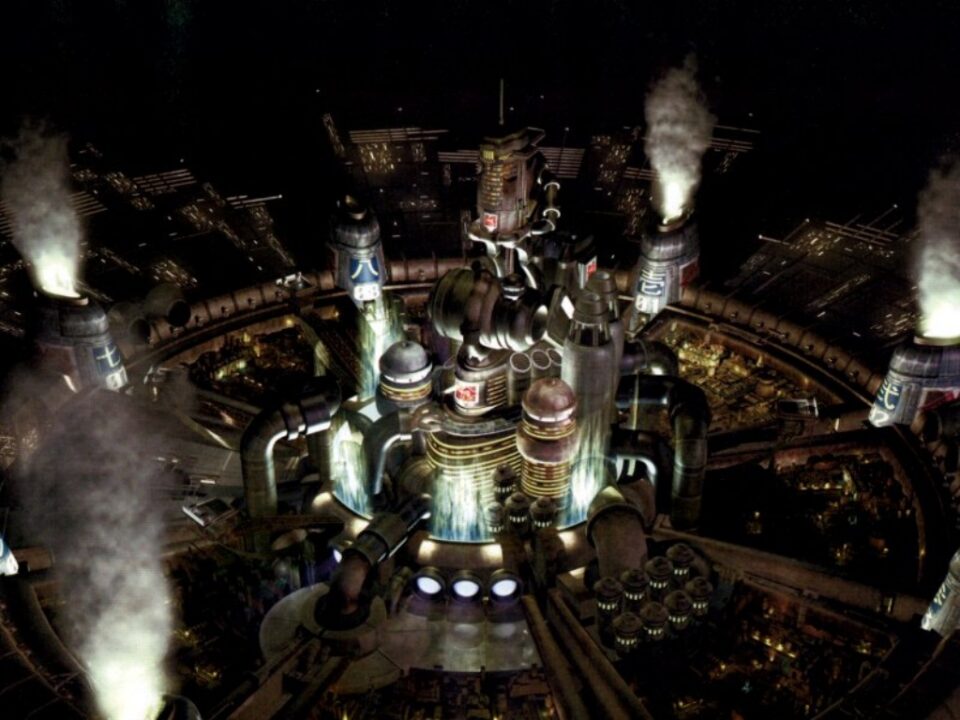
I was pretty familiar with the RPG landscape by the time FFVII arrived, having been through the likes of FFVI, Chrono Trigger, and Ogre Battle. The hype had been growing at a feverish pace among my friend circle, and I even recall getting a VHS preview in the mail from Squaresoft. When I finally got my PlayStation and put in that disc, it was apparent I hadn’t prepared enough.
This was new. Not just a new game, but a new tier of game entirely. Everything about the first few minutes of the game forced you to reevaluate everything you knew about games up to that point. Seeing a fully rendered Aerith walk through the murky back alley as the camera panned back, vehicles criss-crossing in the streets… it’s not just a game anymore. FFVII became cinematic in nature, a higher echelon of storytelling that hadn’t been seen in a game before.
The camera fully pulled back, exploring the breadth of the griminess of Midgar, the logo flashing triumphantly onto the screen and the soundtrack reaching a crescendo of anticipation. It all melts together perfectly. The train seen in the next shot represented more than just AVALANCHE arriving on the scene. It represented all the hype finally coming to fruition — arriving in our living rooms — and it was so worth the wait.
There’s A World Map, Too?!
by Nilson Carroll
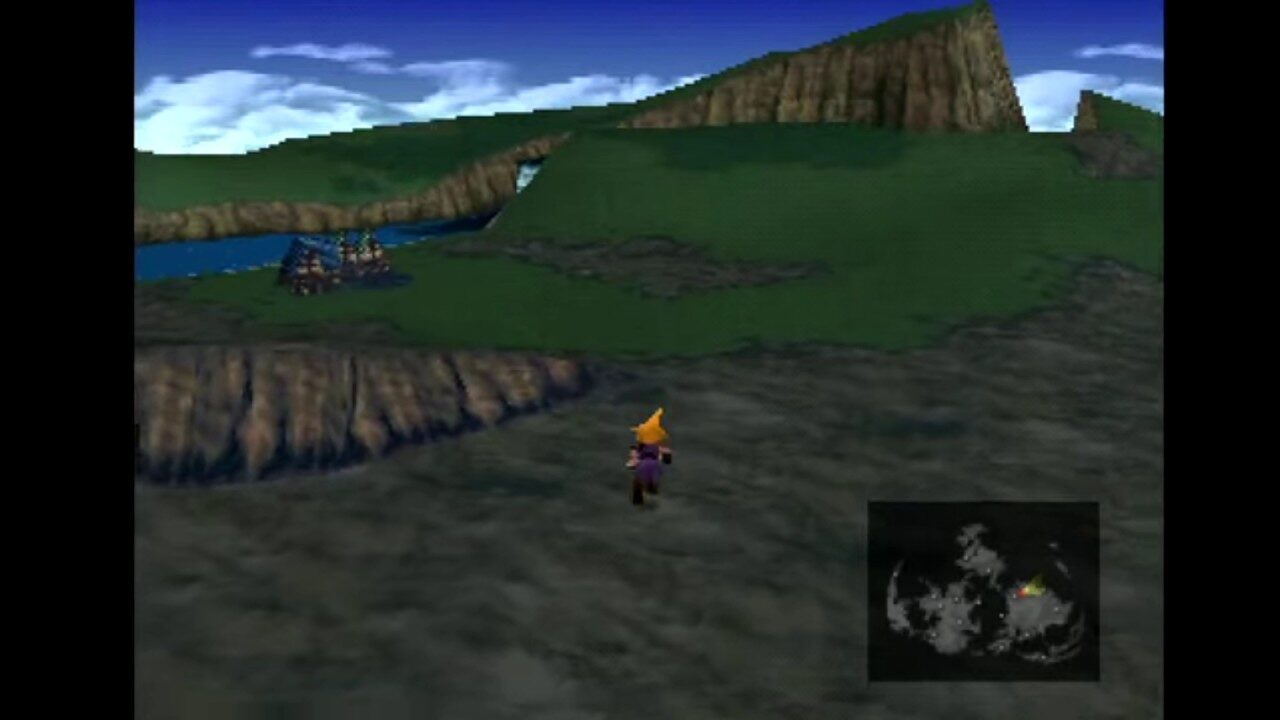
Not so much a plot point as a spatial sequence, the moment that sticks out the most to me is at the tail end of the Midgar journey, when the party is forced to leave the city and venture out into the shockingly large world map. While the JRPGs of old often drop players onto the world map within the first few minutes, Final Fantasy VII doesn’t reveal its width until several hours into its crushingly meaty narrative.
After a heart-popping, sweaty-fisted motorcycle sequence and boss battle, Cloud and crew are literally at the end of the road, with nowhere to go but out. Against the cautiously optimistic “Holding My Thoughts in My Heart,” the party takes one last look at Midgar only to leave for what feels like forever, the entire fiber of the game shifting before the player’s eyes. The architecture of this sequence recalls the point-of-no-returns that make up a lot of Chrono Trigger (the party’s first plunge into 2300 AD especially), but here it’s so surprising to even see a world map, a promise of Final Fantasy VII‘s wealth of questing in a completely foreign and contemporary 3D world.
While spending hours within the unprecedentedly grim pre-rendered maps of Midgar’s depths, players forget all about the structure of 16-bit JRPGs, expecting the rest of the game to have this new, interconnected spatial quality. The world map is such a shock; players can finally take a breath in the fresh air of the dreary countryside heavy with Uematsu’s greatest gift, Final Fantasy VII‘s world map theme. It makes sense that the Remake will end at this beat, as it truly feels like the end of one journey and the beginning of a new, heightened one with impossible stakes. This point of denouement speaks to Final Fantasy VII‘s power to move in and out of vibes rapidly, overwhelming the player with angst and purpose.
Ending (and Opening) on a High Note
by Kiyan Mullen

I was late to the Final Fantasy VII party. Eighteen years late, in fact. The year was 2015. Despite having loved Final Fantasy since I first played FFX in the early 2000s, I hadn’t played even a single minute of the most famous FF of all. Once the remake was announced, I knew that I had to play FFVII ASAP. So I did. And I fell in love.
I loved FFVII so much that I started a new game (or should I say “NEW GAME” like that iconic, titleless title screen does?) as soon as I finished my first playthrough. Pumped up to experience the adventure all over again, I was greeted by…. the same thing I’d just seen in the ending? That’s right: by the time the credits rolled, I had completely forgotten that Aerith’s face illuminated by Mako and accompanied by the first three notes of the opening theme wasn’t just part of FFVII‘s ending… it was part of the beginning too!
And that’s not all. I had also totally forgotten that FFVII began with a shot of outer space, foreshadowing the core dilemma of its second half. My hair stood on end. All the elements of FFVII‘s amazing ending were there right from the beginning.
An RPG is often the best the first time through. Not knowing what’s going to happen next makes the journey exciting. But as soon as I experienced the beginning of FFVII for the second time, I knew my second run would be even more magical and meaningful than my first. That’s why — five and a half playthroughs later — the opening is still my favorite part of Midgar.
Wait, They Can Do This?
by Zach Wilkerson
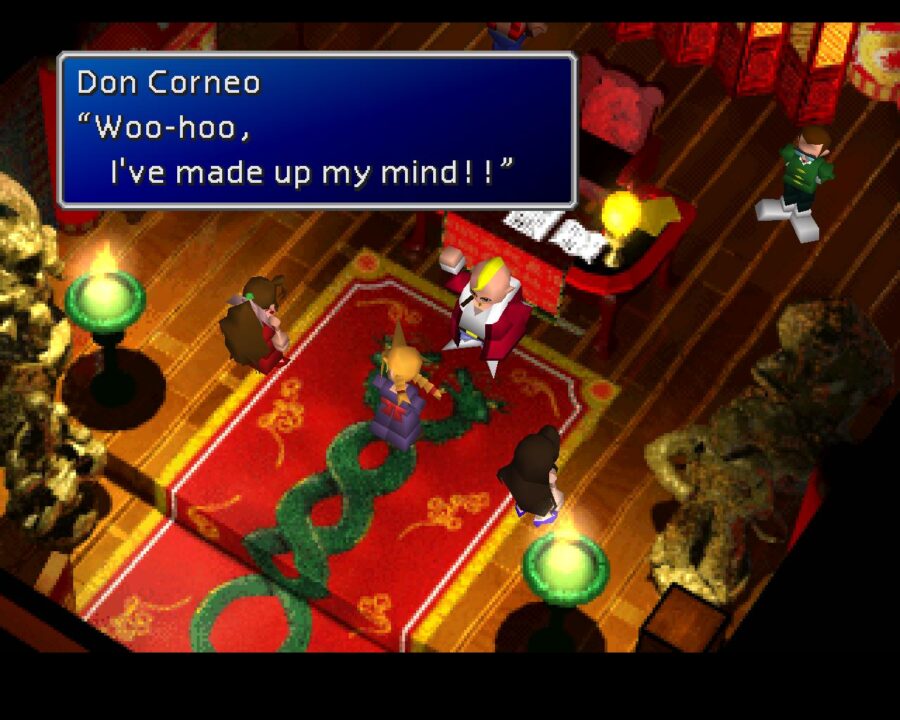
Choosing a favorite moment from Final Fantasy VII seems almost impossible, even limiting it just to Midgar. What about the amazing opening camera sweep? Or the music? Or the motorcycle sequence? Honestly, I was hooked from the moment I laid my hands on this game; it shocked and amazed me at almost every turn.
But the most shocking sequence of all for me as a 12-year-old was Wall Market. I’d played every previous Final Fantasy game released in the US at that point, but all the sexual innuendo was too subtle and therefore was lost on me. I was simply too young to get it. In the Wall Market sequence, though, any previous subtlety was thrown entirely out the window, and I finally got the joke.
A game can put us in a bathhouse? We can make sure our character dresses nicely enough to be picked as a creepy old lecher’s date? I was just the right age to find all of it intriguingly shocking and delightfully amusing, too. It felt like RPGs were growing up with me. Of course, the humor there hasn’t aged well, and the whole sequence is really downright sophomoric, but at the time, it felt like a revelation. Final Fantasy VII was pushing boundaries previously untouched, at least in the mainstream, and even if it doesn’t land today, the Wall Market sequence is yet another example of that.
Oh, and if nothing else, watching Tifa and Aerith threaten unspeakable violence upon Don Corneo is a true highlight of the genre.

